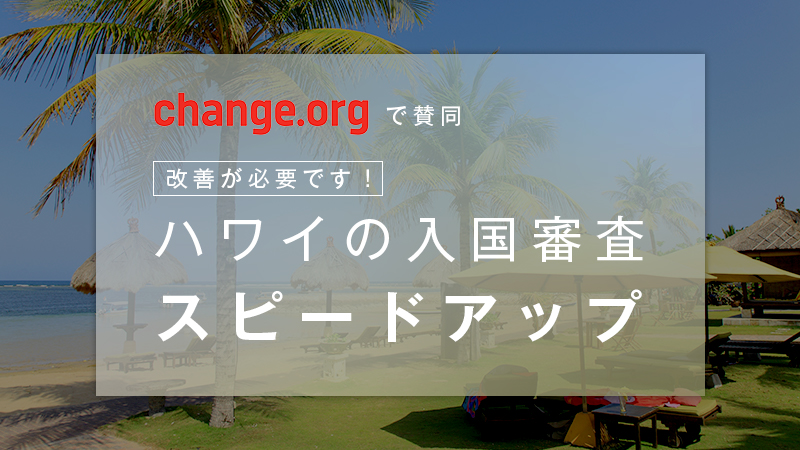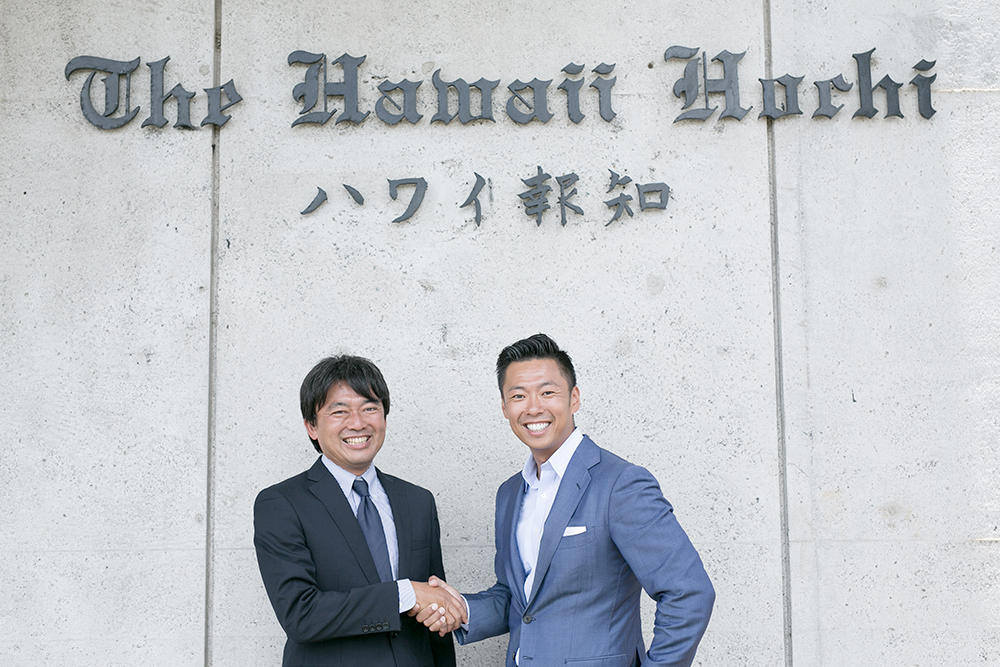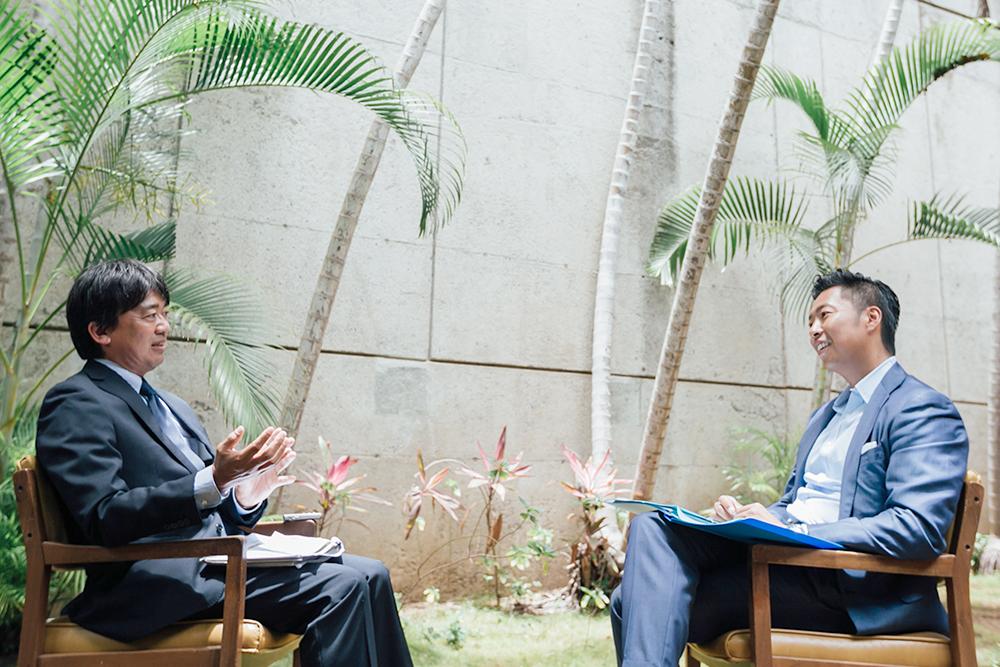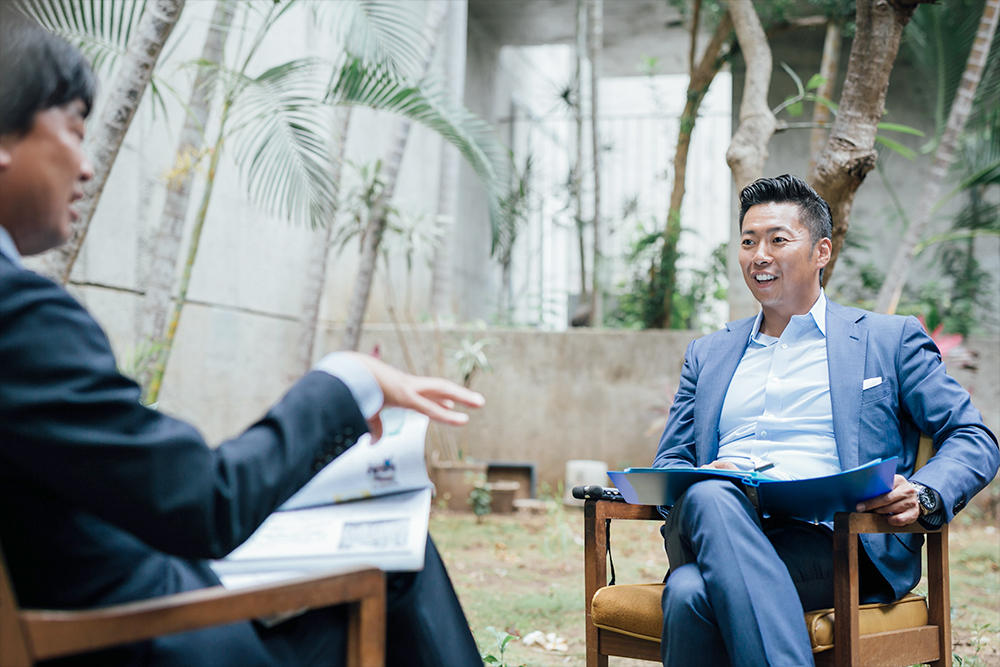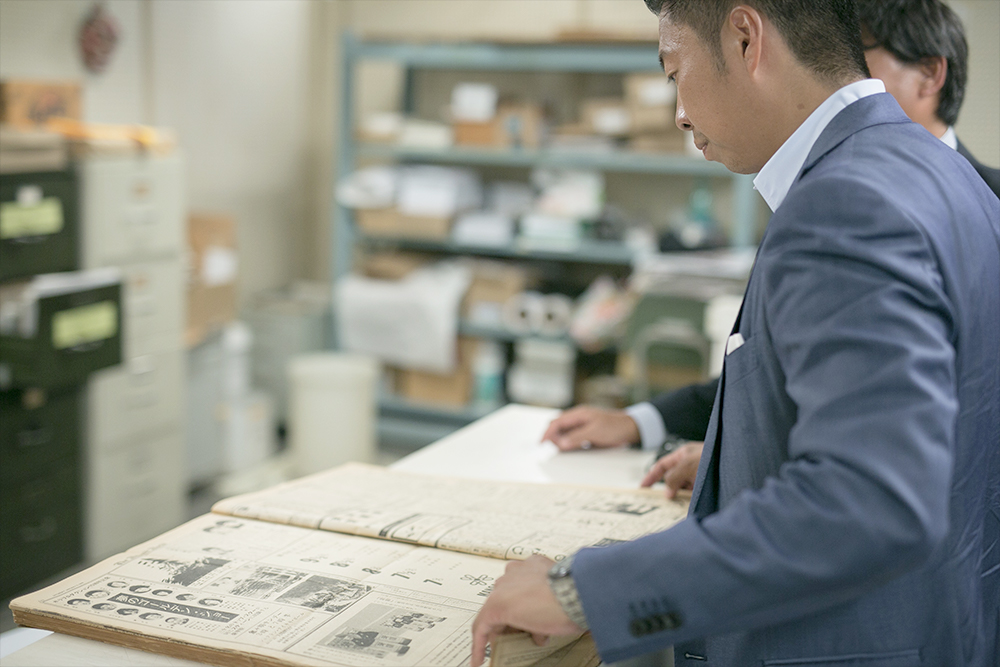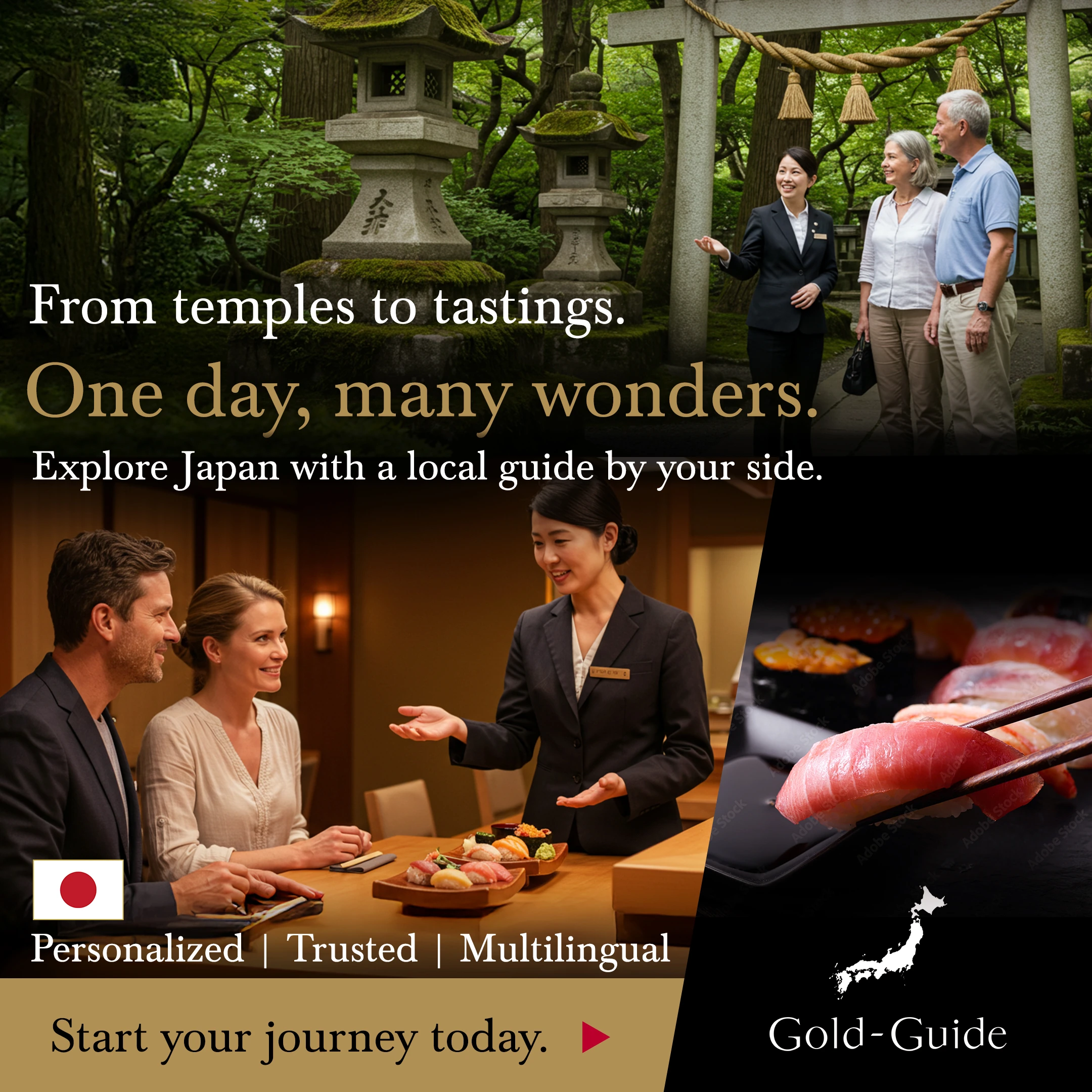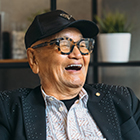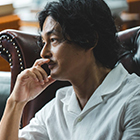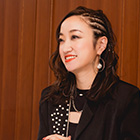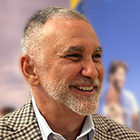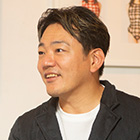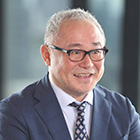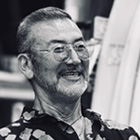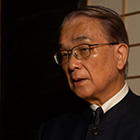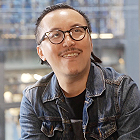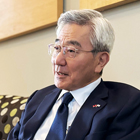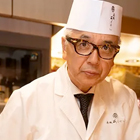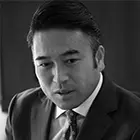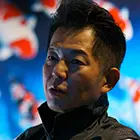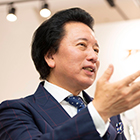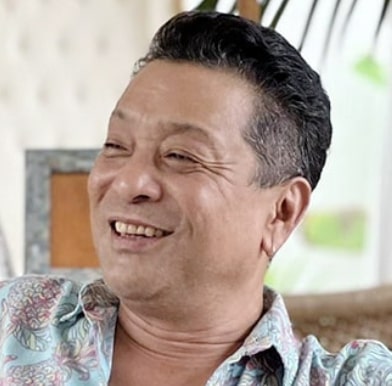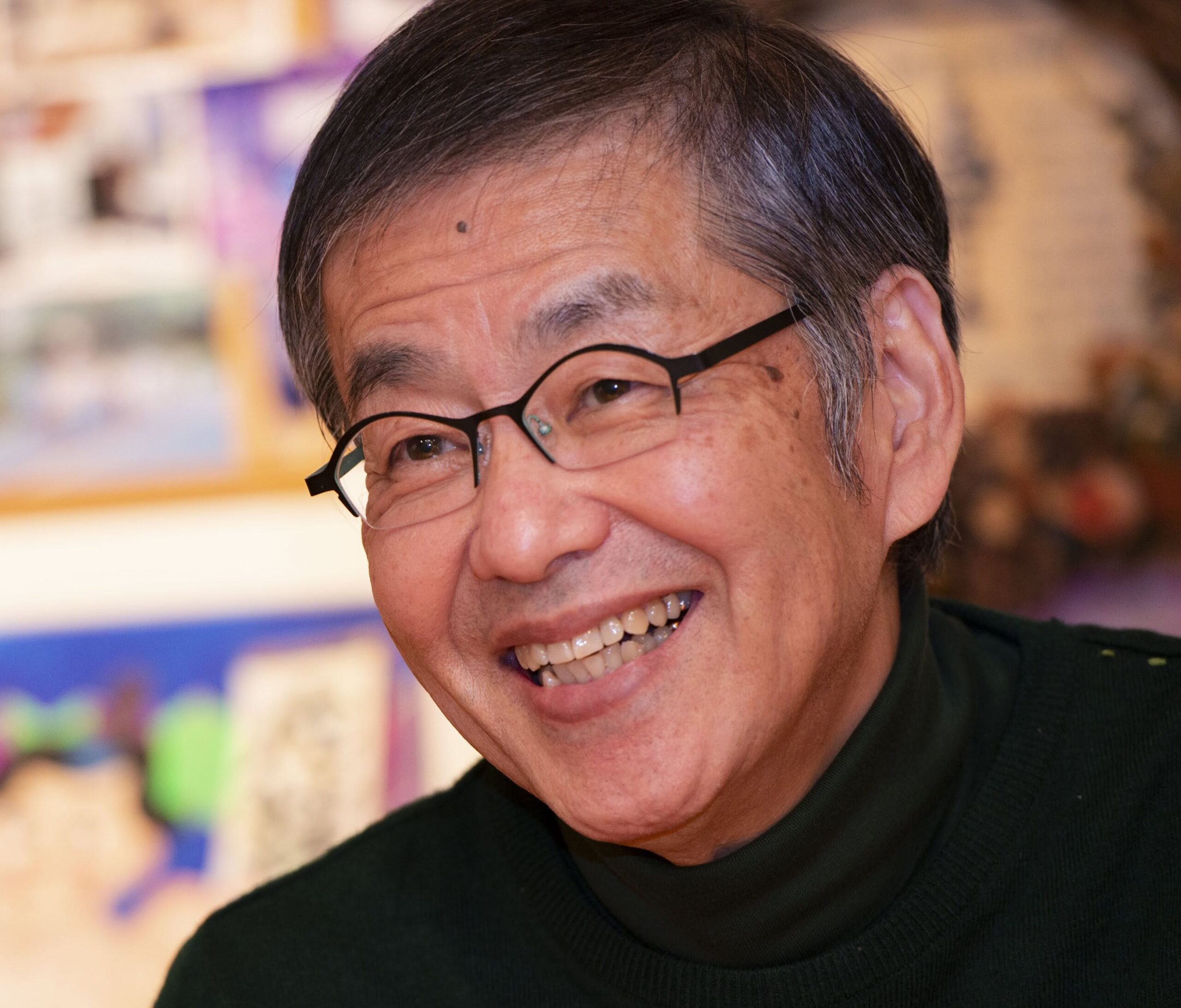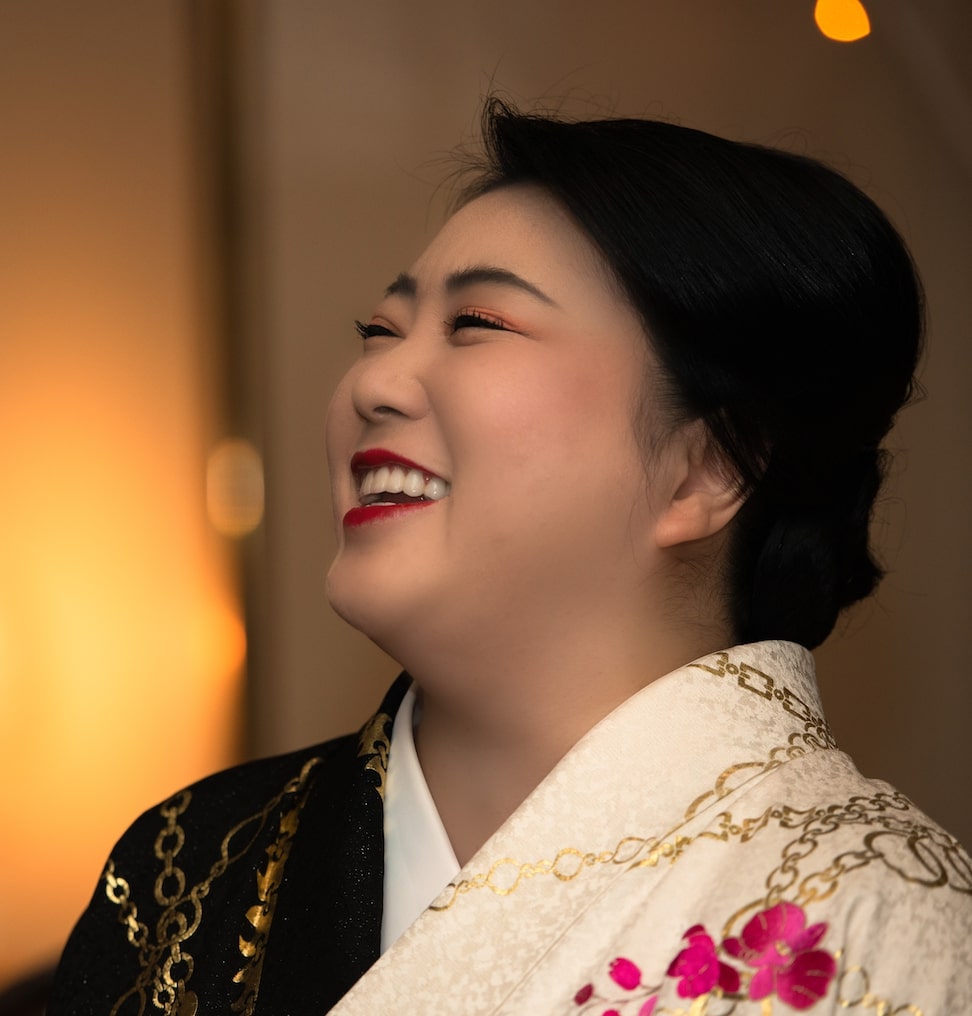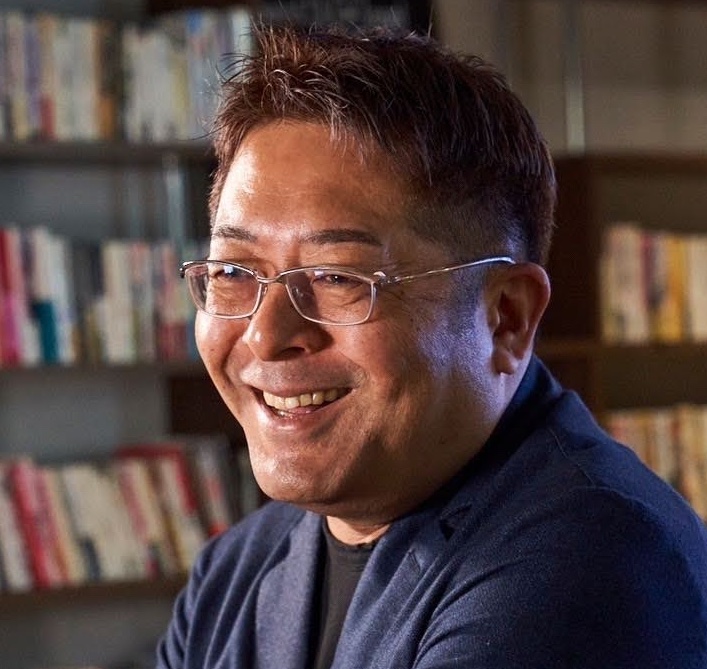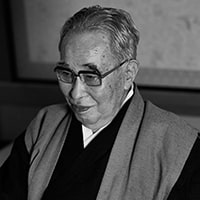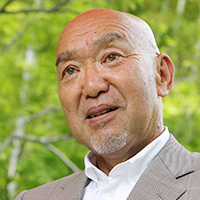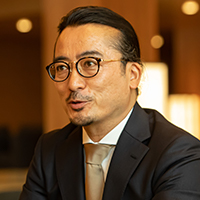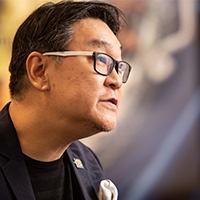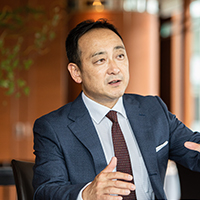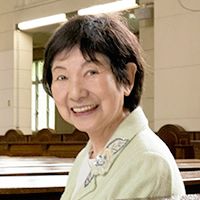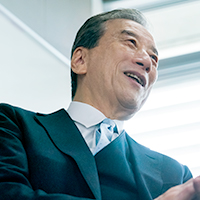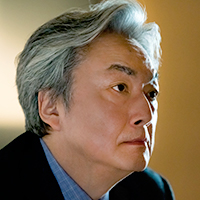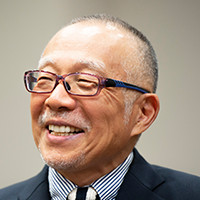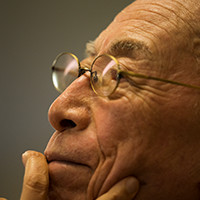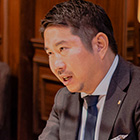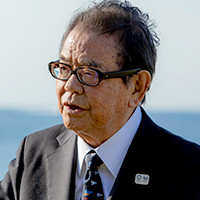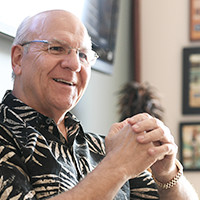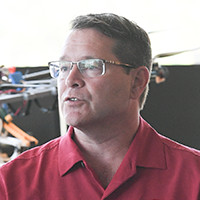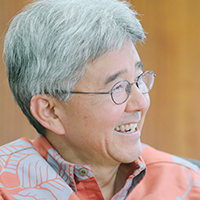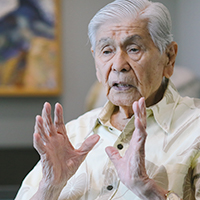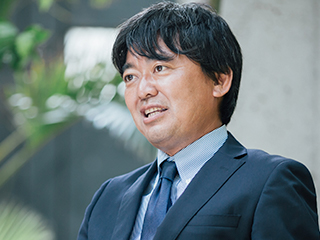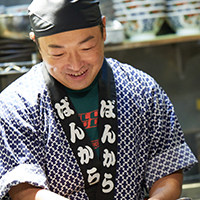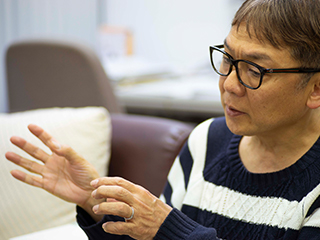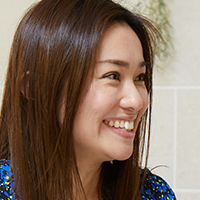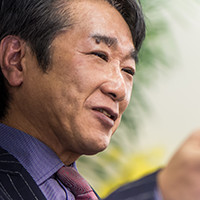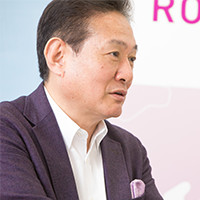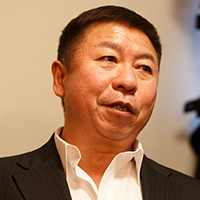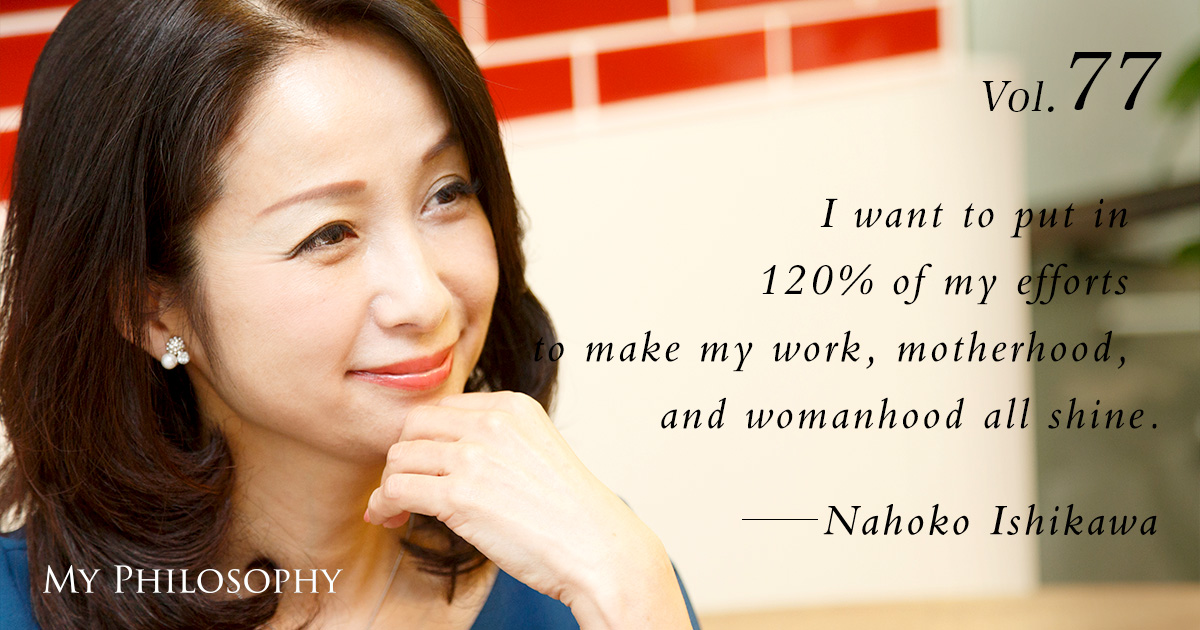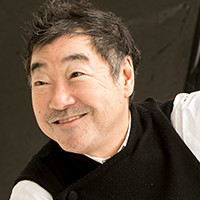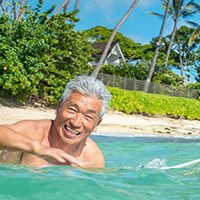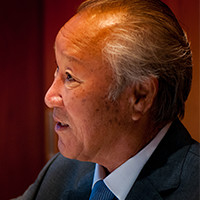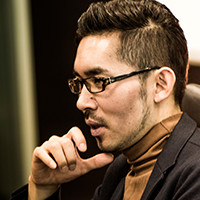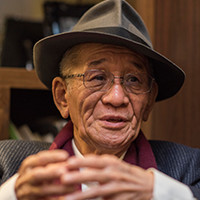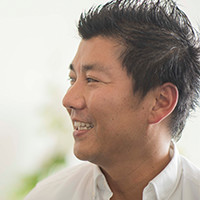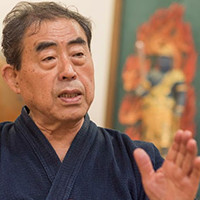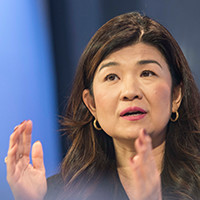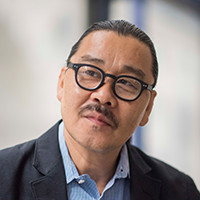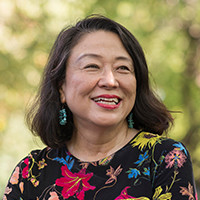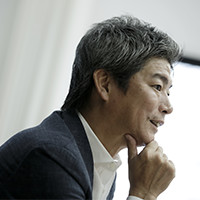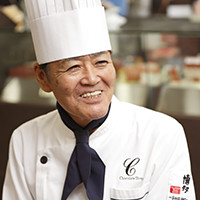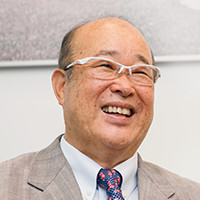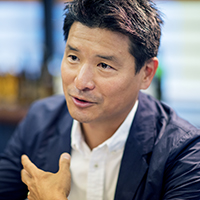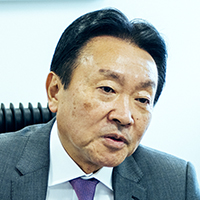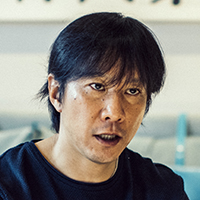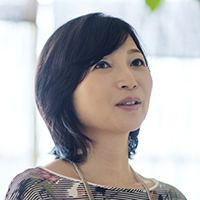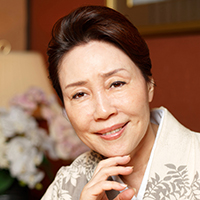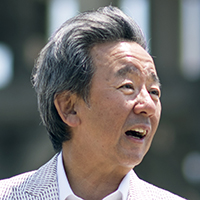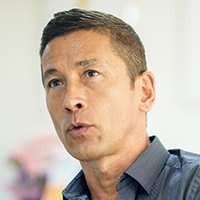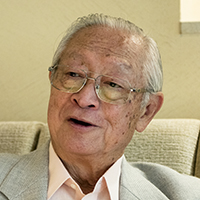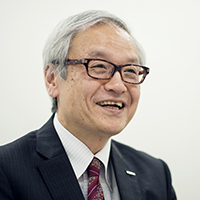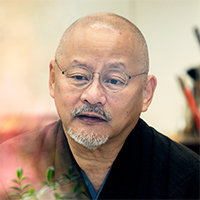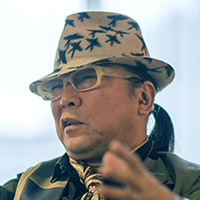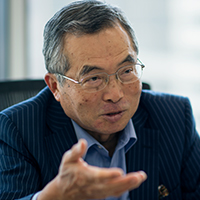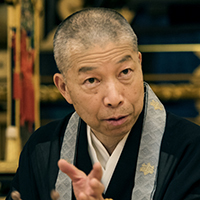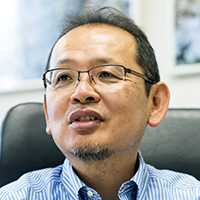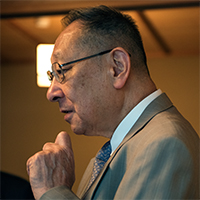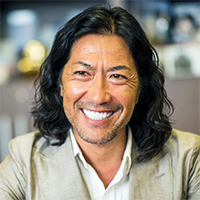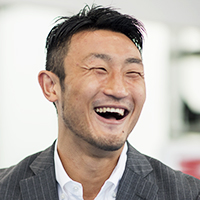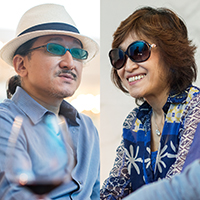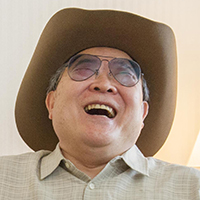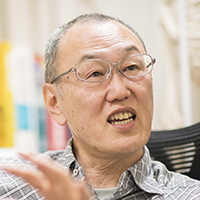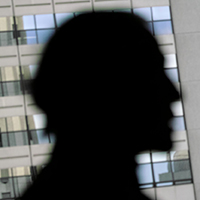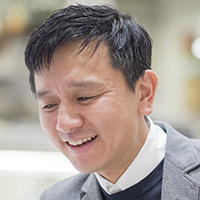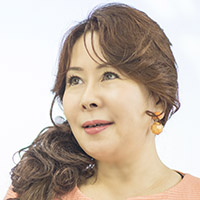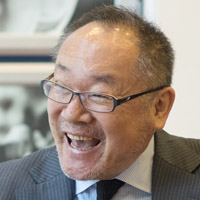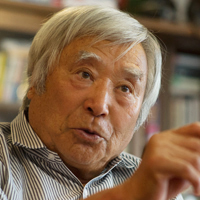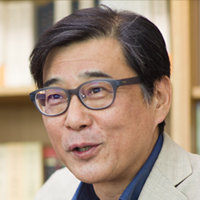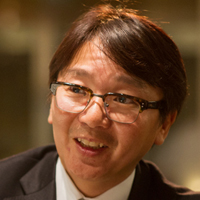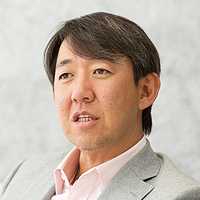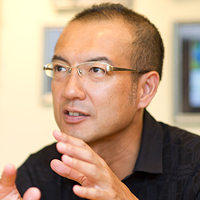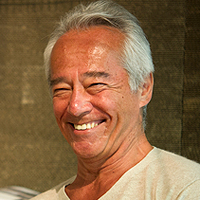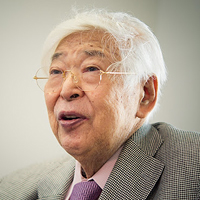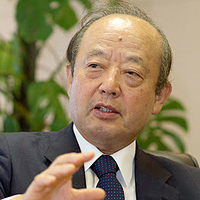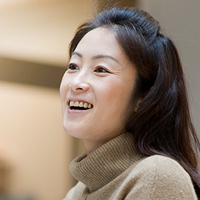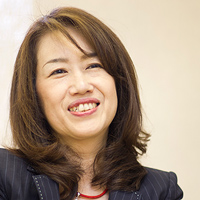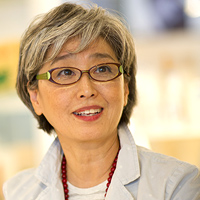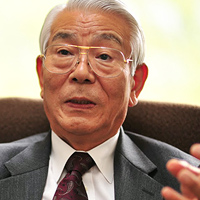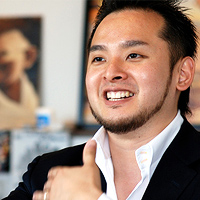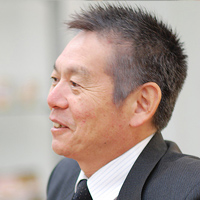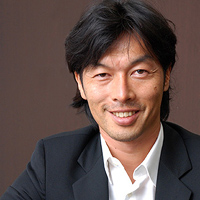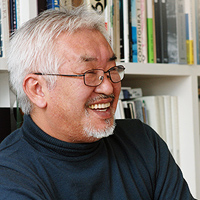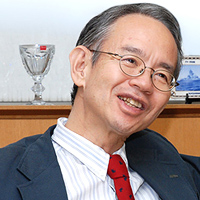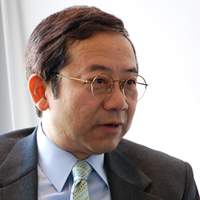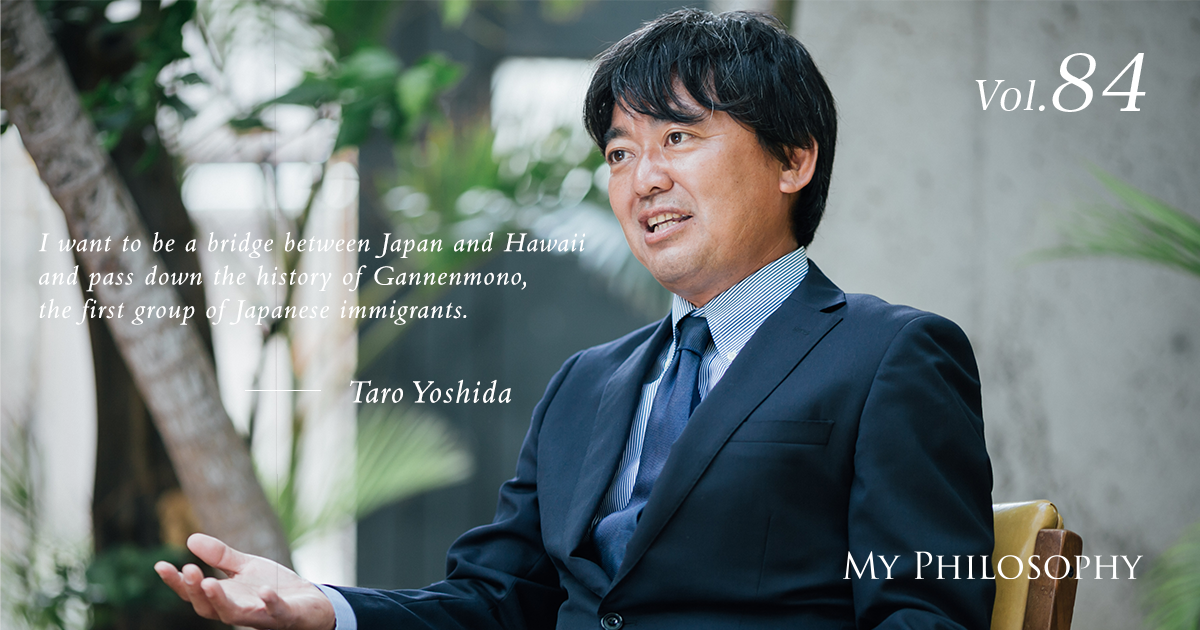
Hawaii holds a special place in the hearts of many Japanese people. It is not only a popular destination for travel, but also a place where many dream of living someday. Mr. Taro Yoshida became enamored with Hawaii at the age of 18, and after numerous visits, he finally moved there at the age of 45. For the past four years, Mr. Yoshida has been serving as the president of the "Hawaii Hochi," the only Japanese daily newspaper in Hawaii. We spoke with Mr. Yoshida about his journey to Hawaii, the relationship and history between the Japanese people and Hawaii, and the allure of Hawaii.
Profile
Vol.84 Taro Yoshida
President and CEO, Hawaii Hochi Ltd.
Born in Tokyo in 1969, graduated from Keio University's Faculty of Law, Department of Political Science. In 1992, joined the Long-Term Credit Bank of Japan (now SBI Shinsei Bank), primarily handling corporate sales. In 2000, switched careers to WDI Corporation, a restaurant management company, where he was responsible for bringing overseas restaurants to Japan and expanding Japanese restaurants abroad. He managed the Japanese launch of "Bubba Gump Shrimp," based on the movie "Forrest Gump," and "Grand Central Oyster Bar" from New York, as well as the Asian expansion of "Capricciosa," a forerunner of the Italian restaurant boom in Japan. In 2008, he was stationed in Hawaii to open "Wolfgang's Steakhouse." Returned to Japan in 2010 and joined Accordia Golf Co., Ltd. in 2011, handling acquisitions of golf courses in Hawaii. Moved to the The Shizuoka Shimbun in 2014, serving as the Vice President of Hawaii Hochi Ltd. in Hawaii, before assuming his current position in April 2015.
27 years since my first visit to Hawaii at 18. Business Opportunities Reemerge in Hawaii, a place I fell in love with
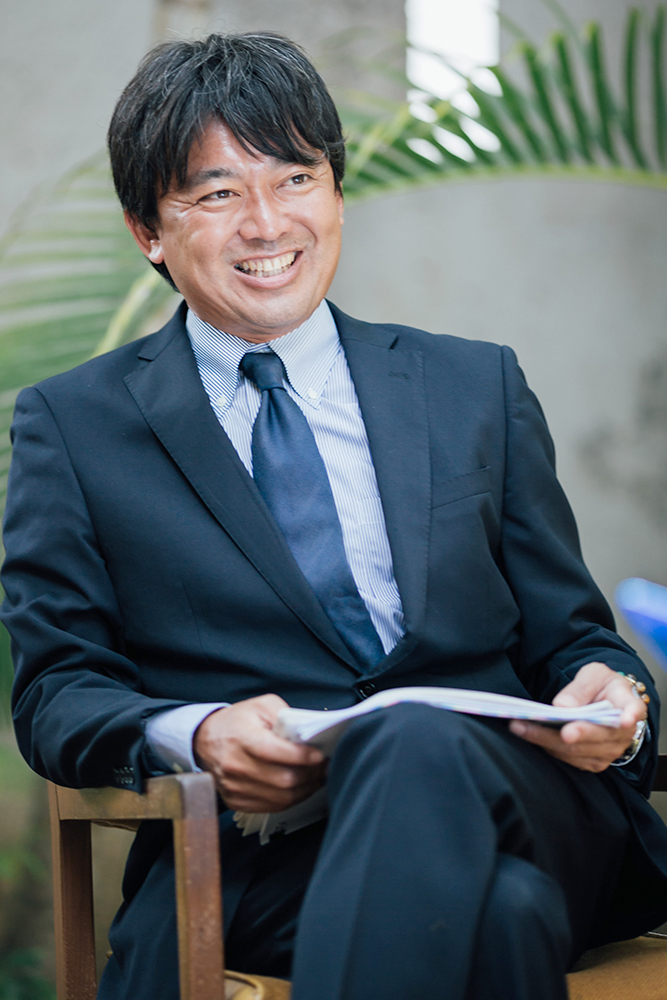
My first encounter with Hawaii was during my freshman year of college, when I visited as part of a golf club camp. A senior member of the soccer team, who owned a golf course in Hawaii, let us play at a significantly reduced rate. His kindness, cool demeanor, and my desire to be like him probably played a part in elevating my impression of Hawaii. I was completely captivated and visited several times even as a student.
After becoming a working professional, I was involved in expanding overseas restaurants in Japan with the WDI Group. It was when we signed the contract to launch “Wolfgang’s Steakhouse by Wolfgang Zwiener” in Japan. Soon after, the mad cow disease outbreak occurred, and we were unable to open in Japan. As a result, we decided to open in Hawaii, where there were many Japanese tourists, and I was appointed as the person in charge of the opening. Even after successfully opening the restaurant in Hawaii and returning to Japan two years later, I felt a sense of incompleteness. I wanted to achieve more in Hawaii and was constantly looking for opportunities to work there. However, I never found an opportunity significant enough to move my base until a turning point came unexpectedly.
About five years ago, the president of the Shizuoka Shimbun, who I knew, approached me to take on the role of president at their subsidiary, Hawaii Hochi. Hawaii Hochi, established in December 1912, is one of the oldest Japanese-language daily newspapers outside of Japan. It was truly a role that connected Hawaii and Japan, so I accepted.
At that time, Hawaii Hochi was at a crossroads. Previously, if you wanted to get information about Japan in Japanese while in Hawaii, Hawaii Hochi was the go-to source. However, with the advent of the internet, the situation changed, and the newspaper was facing difficulties. I proposed that we start featuring local Hawaiian political, economic, and social information in Japanese and negotiated exclusive rights to articles and photos with the largest local newspaper company, the Honolulu Star-Advertiser. From there, both Hawaii Hochi and I started on a new path.
The 150th Anniversary of Japanese Immigration to Hawaii in 2018: Preserving the History from the First Year Immigrants.
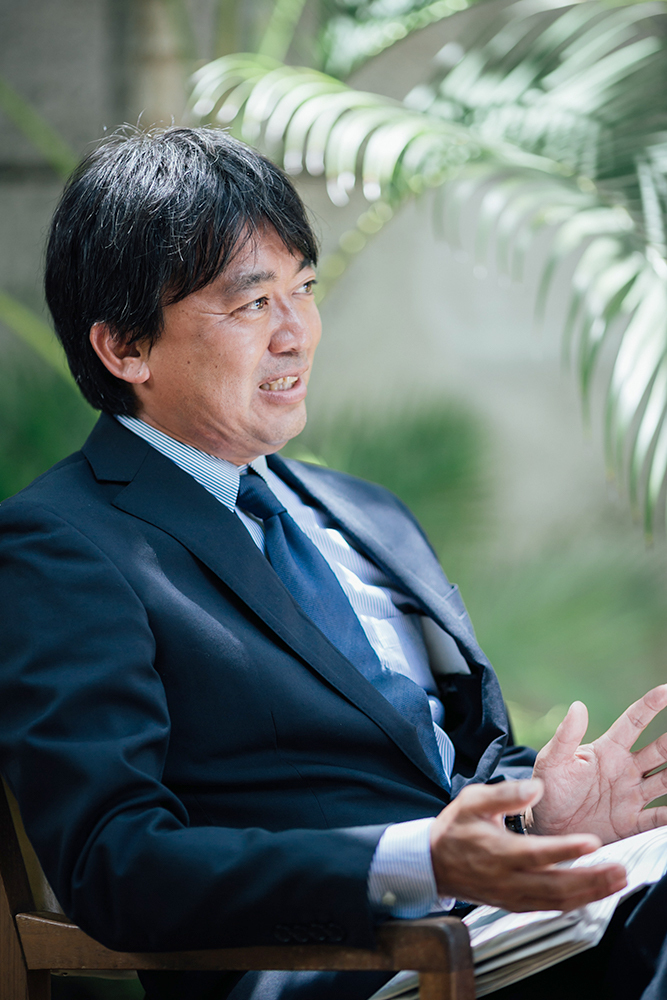
This year marks the 150th anniversary of the arrival of immigrants from Japan to Hawaii, dating back to the first year of the Meiji era (1868). These first-generation Japanese immigrants are known as “Gannen Mono,” and we are involved in projects related to this significant milestone. Fifty years ago, on the 100th anniversary, Hawaii Hochi published a commemorative newspaper that spanned approximately 100 pages. Reviewing those pages reveals the construction of the Byodo-In Temple, the co-production of films between Japan and Hawaii, among other successful endeavors, all of which enjoyed great success. Records also show that a ceremony attended by Prince Hitachi gathered 6,000 people. For this year’s 150th anniversary, Japanese community organizations have initiated and are managing various events, and we have decided to issue a special commemorative edition, similar to fifty years ago. This edition will cover the history and stories of the Gannen Mono, including events attended by Prince Akishino.
Reflecting on history, we recall the tragic event of the Pearl Harbor attack, which turned the homeland of the Japanese immigrants and their residence in Hawaii into enemies, causing great distress among the Japanese Americans. However, the Nisei, or second-generation Japanese born in Hawaii, volunteered to serve in the U.S. military to protect the honor of their families in Hawaii, demonstrating their loyalty and bravery. This history has fostered a trusting and friendly relationship between Hawaii and the Japanese people to this day. Japanese Americans and their descendants have significantly influenced Hawaii’s politics and economy post-war. George Ariyoshi, who served as the third governor of Hawaii from 1974 to 1986, was a Nisei, and the current governor is a Sansei, or third-generation Japanese American. It’s thanks to the continuous lineage of Japanese Americans that the relationship between Hawaii and Japan exists today, making it a place where we can live securely, work, and where 1.57 million tourists from Japan can enjoy annually. We hope to convey through our commemorative edition the significance of our predecessors in shaping this relationship.
*The Hawaii Hochi “150th Anniversary of Japanese Immigration Special Edition” was published on June 16, 2018.
Bridging Hawaii and Japan: The Unique Role of Hawaii Hochi.
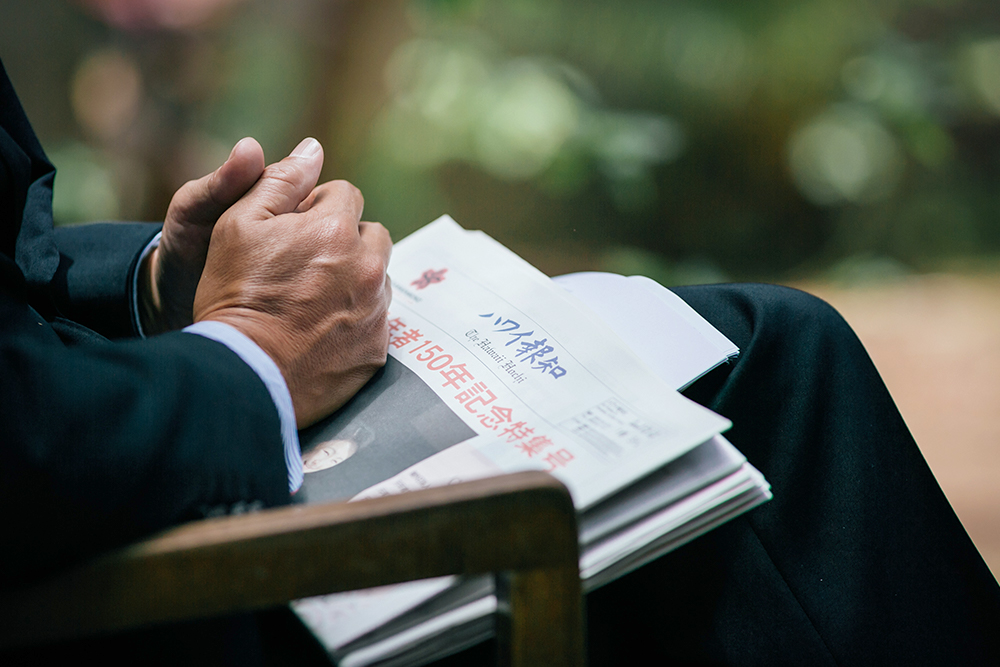
Moving forward, we aim to create a setting where Hawaii Hochi can be accessed beyond the shores of Hawaii. Our goal is to share not only tourism information but also insights into Hawaii’s political, economic, and societal landscapes. As a Japanese media outlet originating from the locale, there remains a plethora of opportunities for us to explore.
Beyond our newspaper and printing ventures, we are proactively branching into other areas. For instance, valuing the significance of disseminating local information for Japanese people by those who have experienced Hawaii firsthand, we launched the 111-HAWAII AWARD 111-HAWAII AWARD(One-One-One Hawaii Award) last year. This award, based on the perspective deemed the world’s most discerning—that of the Japanese—rates and awards favorites in cuisine, souvenirs, tours, etc., through online voting. It’s aimed not only at enhancing satisfaction within the Japanese market in Hawaii but also at improving the quality of Hawaiian businesses and invigorating Hawaii’s economy. Indeed, it represents one of the ventures I’ve always wanted to pursue, serving as a bridge between Hawaii and Japan.
Hawaii: A Culture of “Let’s All Be Happy Together” Through Mutual Support.
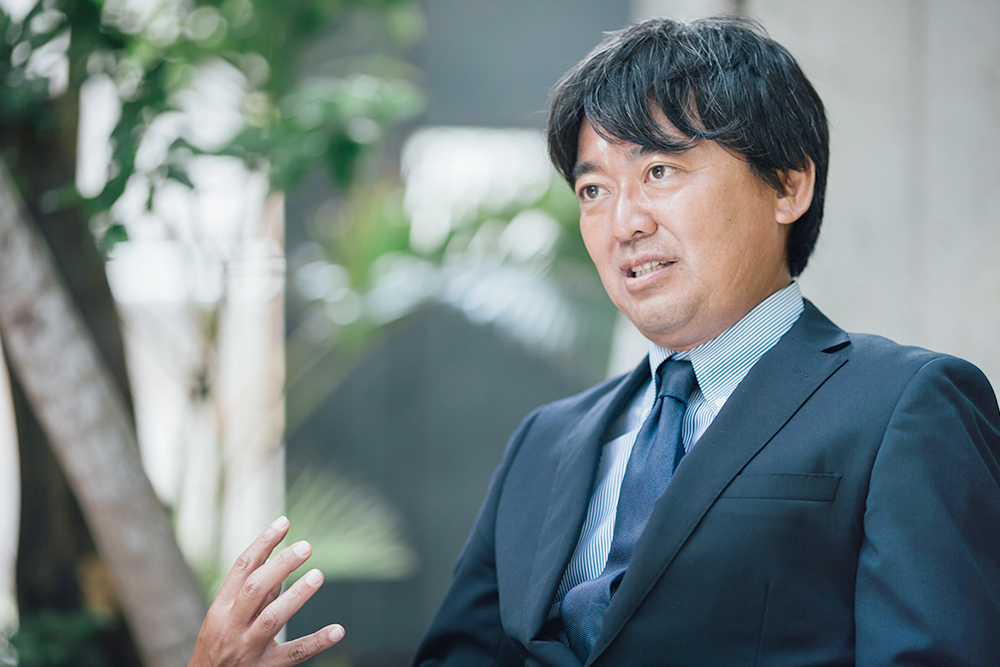
The people of Hawaii are incredibly open-hearted. There’s a term known as the “Aloha Spirit,” which might be best described as a spirit of mutual assistance and happiness embedded within the culture. One unique aspect of Hawaii is the absence of a racial majority. Even the largest group, Caucasians, make up only 40%, followed by Filipinos, Japanese Americans, Hawaiians, Chinese, and Koreans. I believe this diversity is what cultivates Hawaii’s original culture of striving for happiness together.
Coming from a background unrelated to newspapers or printing, I’ve faced my fair share of challenges. However, at the end of the day, what matters most is the connection between people. I’ve always been relatively good at and fond of communicating with others, and having a job based in my beloved Hawaii means I never get too disheartened by the minor setbacks. My personal philosophy has always been to “do unto others as you would have them do unto you,” and acting on this principle ensures that you will always bring joy to others. My ability to persevere here is likely due to how well my own mindset aligns with Hawaii’s culture of mutual support and shared happiness.
I was once asked to meet DK Sugiyama, an interesting junior colleague. It didn’t take long for me to be drawn to his charm, as he shared his stories with me at length (laughs). That day, we hit it off and ended up going for late-night ramen together (laughs). DK Sugiyama possesses a rare assertiveness among Japanese, coupled with an energetic initiative and a magnetic charisma. I felt that he generously shares his energy with others. Through this “My Philosophy” series, I hope to hear from various individuals, absorb a wide range of insights, and spread them to influence and change the world.
I look forward to hearing more stories of what he has absorbed in Hawaii.
株式会社 ハワイ報知社 代表取締役社長 吉田太郎
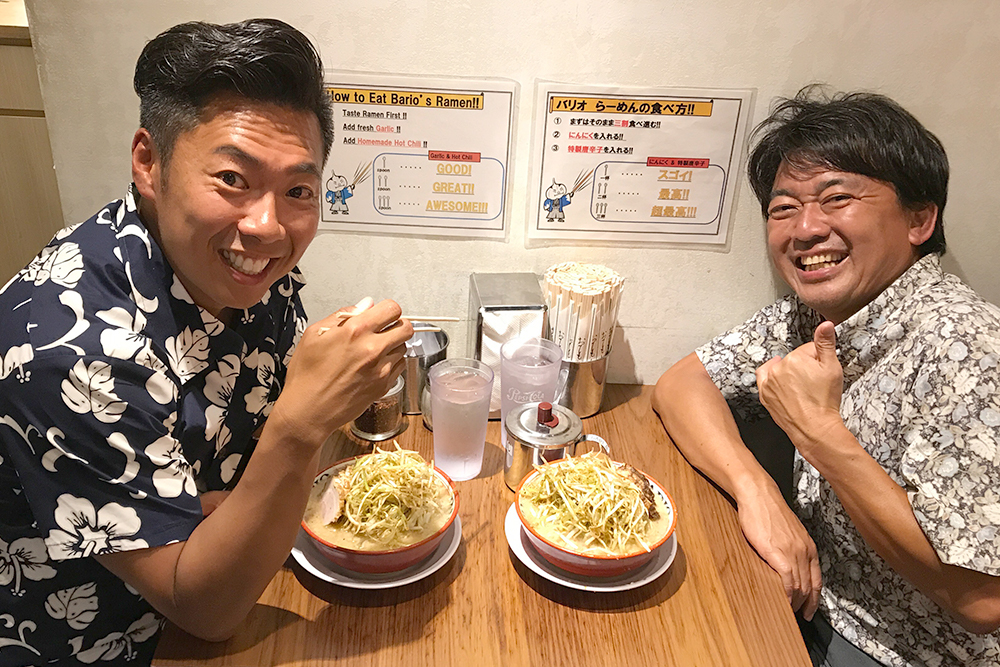
“Leaning in to new opportunities” is my philosophy of action. Neither chance nor connection will materialize unless you make the move yourself. When you put into practice the mindset of “let’s listen” and “let’s try,” various miracles can occur. Since 2018 marks the 150th anniversary of Japanese immigration to Hawaii, I decided to act on creating a Hawaii series for “My Philosophy.” Interviewing Taro Yoshida in the garden of Hawaii Hochi Ltd., I learned about the history of Hawaii, the current situation, and his process of moving there. This reinforced my belief that if you continue to dream and act upon your interests and desires, they can come true.
Although I had visited Hawaii for tourism before, looking at it from a business perspective revealed a different side of Hawaii. Meeting Mr. Yoshida opened up possibilities for a deeper engagement with Hawaii. And yes, the finish-up ramen was the best (laughs).
June 2018, Hawaii Hochi Ltd., Writer: Miyu Natsume, Photographer: BetterHalf Yuhei Tera
One observation from my Hawaii coverage was the crowded immigration process, which involves quite a wait. Last year, during a family trip to Hawaii, we were kept waiting for two hours, leading me to think, “Hawaii’s immigration is slow,” which initiated the following campaign. I will be speaking directly to airport and government officials in Hawaii, so please support us with your electronic signature!
An improvement is necessary to speed up the Hawaii immigration (customs) process during busy times! ↓ Please click below.
